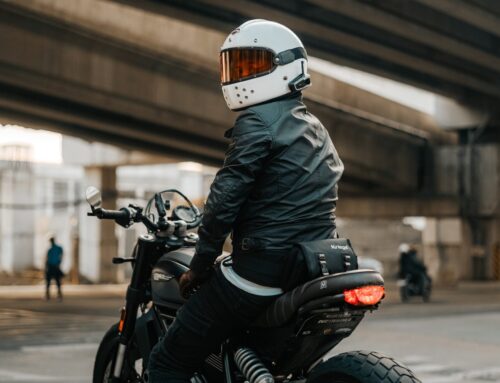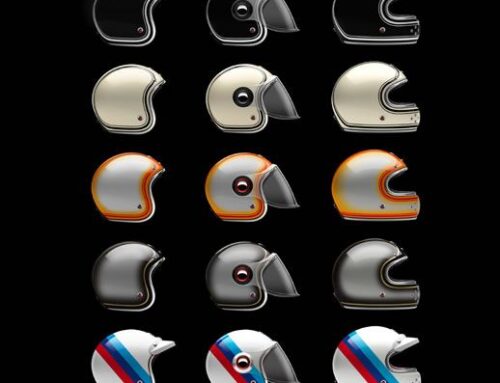Motorcycle safety is of utmost importance for riders to protect themselves from potential accidents and injuries. Among the various types of motorcycle helmets available, the full-face helmet is often considered the pinnacle of safety gear. In this comprehensive article, we will delve into the question: Is a full-face helmet safer? By exploring the superior features and protective capabilities of full-face helmets, we aim to provide riders with valuable insights into the critical role of this helmet type in motorcycle safety.
- Understanding the Full-Face Helmet
The full-face helmet is designed to provide complete head protection, covering the entire face, including the chin and jaw areas. It offers a solid outer shell and a visor that shields the eyes from wind, debris, and UV rays, ensuring optimal protection for riders during various riding conditions.
- Advantages of Full-Face Helmets
a. Comprehensive Protection: The full-face design offers all-around coverage, providing enhanced protection for the face, which is vital during crashes and accidents.
b. Face and Eye Safety: A full-face helmet’s built-in visor or face shield protects the rider’s eyes from debris, bugs, and wind, promoting clear visibility and preventing potential distractions.
c. Reduced Noise and Wind: Full-face helmets are more effective in reducing wind noise and offering better aerodynamics, contributing to a more comfortable and focused riding experience.
d. Improved Impact Resistance: Full-face helmets are designed to absorb and disperse impact forces evenly across the helmet’s surface, reducing the risk of head and facial injuries.
e. Enhanced Weather Protection: Full-face helmets offer better protection against rain, cold, and adverse weather conditions, ensuring the rider’s comfort and safety.
f. Reduced Facial Fatigue: Full-face helmets shield the face from wind and reduce wind resistance, minimizing facial muscle fatigue during long rides.
- Safety Features of Full-Face Helmets
a. Chin Bar: The chin bar in a full-face helmet plays a crucial role in protecting the lower face and jaw area during accidents.
b. Impact Absorption: Full-face helmets are designed with energy-absorbing materials, such as EPS foam, to disperse impact forces and reduce head injuries.
c. Secure Fit: Full-face helmets come with secure straps and padding to ensure a snug and comfortable fit, minimizing the risk of helmet displacement during an accident.
d. Visor Locking Mechanism: Many full-face helmets have a locking mechanism for the visor, preventing accidental opening during high-speed rides.
- Comparing Full-Face Helmets with Other Helmet Types
a. Open-Face Helmets: While open-face helmets offer better ventilation and visibility, they lack the same level of facial protection as full-face helmets.
b. Modular Helmets: Modular helmets combine features of both full-face and open-face helmets, but the hinge mechanism may reduce their structural integrity compared to traditional full-face helmets.
c. Half Helmets: Half helmets provide minimal coverage and protection, leaving the face and ears exposed, making them less safe in case of accidents.
- Common Myths about Full-Face Helmets
a. Full-Face Helmets Limit Vision: Full-face helmets provide excellent peripheral vision, and modern designs feature larger and clearer visors for an unobstructed view.
b. Full-Face Helmets are Uncomfortable: With advancements in helmet technology, full-face helmets offer superior comfort, ventilation, and padding for long-lasting wear.
c. Full-Face Helmets Cause Neck Strain: Properly fitted full-face helmets distribute the weight evenly, reducing strain on the neck and shoulders.
- Choosing the Right Full-Face Helmet
a. Fit and Sizing: Proper fit is crucial for helmet safety. Riders should try on various helmet brands and models to find the one that fits securely and comfortably.
b. Safety Certifications: Look for full-face helmets that meet or exceed safety standards like DOT (Department of Transportation) or ECE (Economic Commission for Europe) certifications.
c. Ventilation: Consider helmets with adequate ventilation systems to keep the rider cool and comfortable during rides.
Conclusion
In conclusion, a full-face helmet is undoubtedly the safest choice among various helmet types available for motorcycle riders. Its comprehensive face protection, improved impact resistance, and enhanced safety features make it the pinnacle of motorcycle safety gear. While other helmet types may offer specific advantages, the full-face helmet remains the top choice for riders who prioritize maximum protection and safety during their journeys.
Riders should always prioritize safety by investing in a high-quality, well-fitted full-face helmet that meets the necessary safety standards. With a full-face helmet as part of their safety gear, riders can confidently explore the open road, knowing they are well-protected in case of unforeseen accidents.





